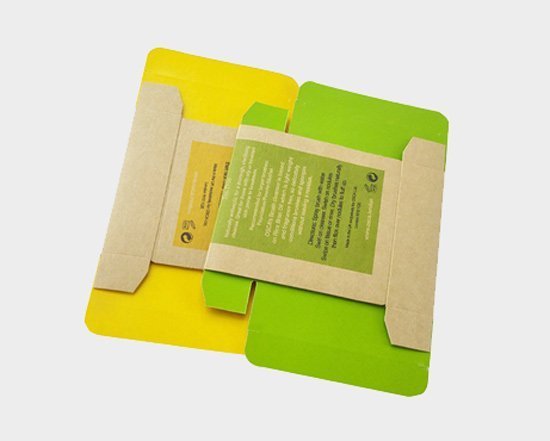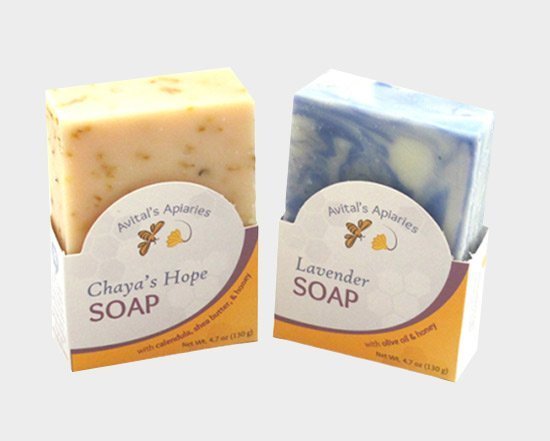Choosing the Right Soap Packaging Box
Soapmaking, either for commercial or personal purposes, can be quite an undertaking. Production -The making of the soap – is just the first step. Packaging and branding the finished soap bar is the next essential step. You can wrap soap bars in plastic, printed fabric, or paper. The choice of packaging material is one the soap maker has to make astutely. Usually, a soap packaging box made of paper material is most widely used.

You’d want a material that is not too costly but also effective – in that it does enough to protect the soap bar from cracks or damage. The relative cost of printed fabric would make it an expensive choice. Plastic, on the other hand, is not eco-friendly. It is made from polymers, which are derived from crude oil and natural gases (non-renewable energy sources). Plastics are also non-biodegradable, which means their continued use as package materials only contributes to the vast amount of plastic waste adversely affecting our planet, its oceans, and its aquatic life. Paper, by comparison, is cheap and eco-friendly. And as such, the popular choice for packaging soap bars.
Paper boxes not only serve as a protective container for the soap but also function as a label on which we can print brand names and details about the product.

Types of Paper for Making Soap Packaging Box
There are two primary choices of paper types for making package boxes – Kraft paper and regular cardboard paper.
Kraft Paper
Otherwise known as sack paper is made using wood pulp via the Kraft process. Like other paper production methods, this process involves the chemical conversion of wood into wood pulp. The Kraft process differs in that it consists in using white liquor to separate the lignin from the cellulose fibers. The result is the Kraft paper which is stronger than regular paper because of the reduced lignin content and high sulfur and cellulose fiber ratios. Kraft paper maintains a natural light brown color, having not undergone extensive bleaching procedures, which reduces its strength and increases production costs. However, Kraft paper can be bleached white if the need arises, but common use cases retain its natural color because of its increased durability.
Due to its light, strong, durable, and flexible characteristics, paper is an ideal choice for making soap packaging boxes. Strength and durability of kraft paper offer adequate product protection and sustainment through shipping. Its lightness keeps the product’s overall weight down, bringing shipping costs down. Its flexibility makes it highly customizable for box design choices and label designs.

The other material for soap packaging is cardboard paper, which is also known as SBS, cardstock, ivory paper, etc. Both sides of such soap packaging boxes are white in color. And that’s possible for both sides printing with your design artwork colors.
Cardboard Paper
Cardboard is a generic name for thick paper-based products ranging from paperboard (thick paper) to corrugated fiberboard (made up of multiple plies of paper material). It is cost-effective, strong, and durable, offering optimum protection for the enclosed soap bars. However, it is not as lightweight as kraft paper.

Soap Packaging Box Design
The design of the soap package box is the next thing a soap maker must consider. The package box is the first thing a prospective buyer would see on the supermarket aisle or wherever else retailers display it, thus the need to pay attention to how our package boxes look. Below are popular design choices for soap boxes.
Plain Box with Label
The label is usually a custom-made, artfully designed strip of paper containing the brand name, logo, and product information. This design relies primarily on the label to provide flair. The soap maker then sticks the label onto the plain paper box housing the soap.

Custom Printed Soap Packaging Box
An exquisite albeit expensive alternative to the labeled plain-box design, this type of box has graphics and text directly printed onto the box. So the soap maker can be creative with the entire box surface to create a unique brand look for themselves

Soap Box with Cut-out Window
This kind of box features a cut-out window covered with transparent material, through which prospective buyers can see the soap. The shape and size of the cut-out are often customized to create a unique brand look. This design choice is popular as it showcases the color or texture of the soap bar within.

Holster Boxes
Here, the box covers a part of the soap bar while allowing the top part to peek out. Similar to a cut-out box, the only difference is that the cut-out is at the top of the soap box and has no transparent cover. It is a design model showcasing soap bars with interesting colors, textures, or smells.

Benefits of a Good Soap Packaging Box
Below are the necessary steps and things to consider when choosing a suitable soap packaging box.
Proper Product Protection
Making the right box choice to package soaps guarantees protection from the point of manufacture to the consumer’s hands. Before the finished product soaps can get to the consumers, we need to ship them from the production facility to the retail outlets. This shipping process can be unkind to soaps resulting in the soaps reaching the buyers in bad condition.
Effective Brand Promotion and Advertising
In the very competitive soap market, a soap maker needs to create a brand image that stands out from the others and attracts buyers. The average soap buyer faces many purchase options when they get to the grocery aisle. Most of the time, the perception the buyers form from the packaging and presentation of each product determines the choice they’ll make. A good packaging box enhances the presentation of the product and communicates its quality. A good package box will help the buyer develop good perceptions about the brand and product, thereby increasing sales and brand recognition.

How to Create A Custom Soap Packaging Box
Normally, a custom printed soap packaging box will help protect your handmade soaps from damage during the shipment. After all, it is made according to the dimensions of the soaps, and the soaps will sit well inside the packaging boxes. Furthermore, the boxes should be strong and durable.
Choose a custom size
First, you need to measure the size of the soap and use this to determine the size of the box. Then you can have the length, width, and depth of the soap packaging box.
Create the design artwork file
To embed your print artwork, you need to draw a soap packaging box template. If you don’t have one, you can contact our service team to make that according to your requested dimensions. Add your preferred color, text, and images in CMYK or Pantone format, not RGB.
Print your artwork on cardstock
Cardstock is a thin material for soap packaging, which comes in three types with different thickness, like 14pt, 18pt, and 24pt cardstock. These are widely used for soap box making. If you also need to use this box for shipping, corrugated cardboard is recommended, because it is a thicker material withstanding rough handling during the moving.
Finishings for Soap Boxes
On the surface of the soap packaging box, there are various choices of finishings, like hot stamping, embossing, glossy spot UV varnish, aqueous coating, etc. If you want to make the logo attractive, hot stamping and spot UV are widely used. Of course, you can also choose a cutout window for the soap box, with or without a plastic cover is workable.
Conclusion
The ultimate goal of a soap maker is to get quick sales, create a unique brand and carve a niche in the soap market. To achieve this goal, each unit of the soap bar must get to the market undamaged. A good package box ascertains this. It also lures and attracts buyers to the product. This article is the soap maker’s guideline to effectively crafting a package design box to take their business to the next level.